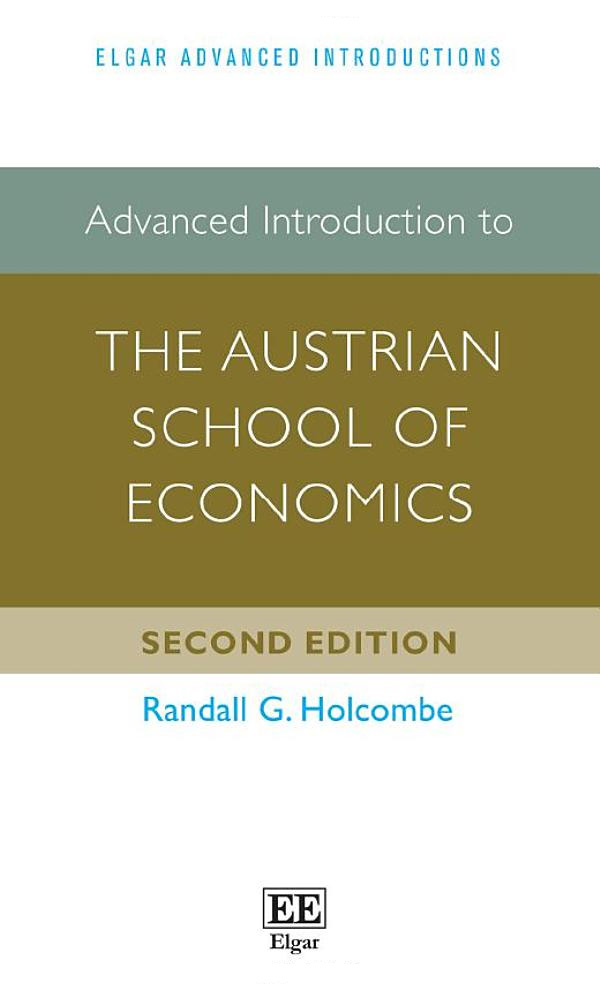Advanced Introduction to the Austrian School of Economics
 The second edition of my book Advanced Introduction to the Austrian School of Economics has just been published. The book’s intended audience is people who have some familiarity with economics and are interested in how the ideas of the Austrian school differ from mainstream economic thought.
The second edition of my book Advanced Introduction to the Austrian School of Economics has just been published. The book’s intended audience is people who have some familiarity with economics and are interested in how the ideas of the Austrian school differ from mainstream economic thought.
The Austrian school of economics focuses on the market process and emphasizes that a market economy is a spontaneous order. Everyone makes their own plans, and the market mechanism works to coordinate those plans using decentralized information possessed by market participants to allocate resources. The Austrian school’s approach contrasts with the focus on equilibrium in mainstream economics.
The Austrian school also emphasizes the importance of entrepreneurship to economic progress. It recognizes that knowledge is decentralized and that markets generate information, including price information, which helps individuals allocate resources effectively. We think of firms as specialized in producing certain products, but to do that, they really specialize in obtaining and using specific types of knowledge. Firms are knowledge repositories.
The book reviews the economic calculation debate that had a major influence in developing the ideas of the Austrian school. Ludwig von Mises, in particular, argued that resources cannot be allocated rationally without the information provided by markets and market prices. Capital markets are especially important.
Most of the economics profession fell on the other side of the debate, arguing that central economic planning was a more effective way to allocate resources than reliance on markets. The collapse of the Berlin Wall in 1989, followed by the break-up of the Soviet Union, pointed to the failures of central economic planning, and events pushed economists to see the merits of the Austrian school’s critiques of central economic planning.
The Austrian school is also distinguished by its business cycle theory, which emphasizes the heterogeneous nature of capital and the importance of price signals (especially interest rates). When price signals are distorted, misleading information can lead to unprofitable investments that lay the foundation for economic downturns. The dot-com bubble in the late 1990s and the real estate bubble in the 2000s are examples that illustrate the merits of the Austrian school approach to macroeconomics.
The book also contains a brief history of the Austrian school, describing its rise in the first half of the twentieth century, a subsequent decline, and its resurgence toward the end of the twentieth century that continues today.
The second edition has some additional material on entrepreneurship and the theory of the firm, and on the Austrian school’s approach to macroeconomic issues. It also relates the ideas of the Austrian school to the Bloomington school, public choice, and more generally, the institutional approach to economic analysis.
If you have seen the first edition, there probably isn’t enough new in the second edition to warrant buying a copy, but for readers who want to understand the ideas that define the Austrian school, that’s the book’s target audience.





